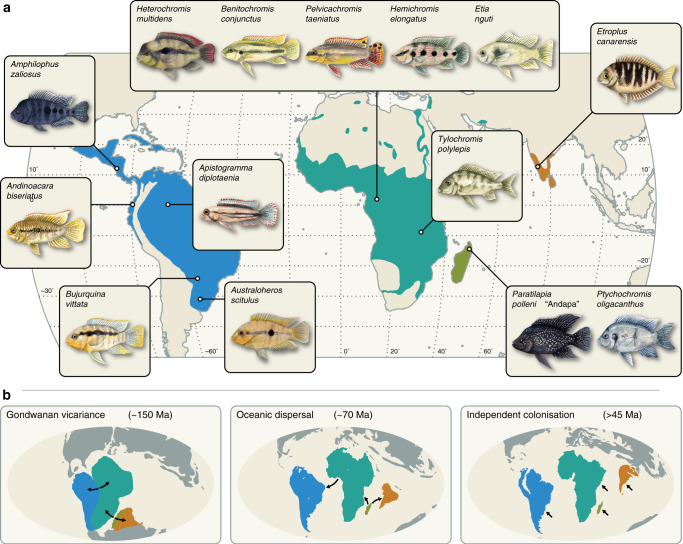Fig. 1. Global distribution of cichlid fishes and diversification scenarios.
a Present-day distribution of cichlid fishes in the Americas (subfamily Cichlinae; blue), Africa, and the Levant (Pseudocrenilabrinae; cyan), Madagascar (Ptychochrominae; green), and the Indian subcontinent (Etroplinae; orange). The drawings illustrate the 14 cichlid species used for whole-genome sequencing. Their approximate geographic origins are indicated. b Three hypotheses for the phylogeographic history of cichlid fishes. According to the “Gondwanan vicariance” hypothesis, cichlids lived on the Gondwanan landmasses South America, Africa, Madagascar, and India before the separation of these landmasses and diverged as a result of this separation. This would require cichlids to be at least as old as the initial Gondwanan split, i.e., 150 million years. The “Oceanic dispersal” hypothesis posits that cichlids are younger than the separation of Gondwanan landmasses and hence reached their current distributions through long-distance oceanic dispersal. Some molecular studies suggest that this could have occurred around 70 Ma. An alternative hypothesis that is consistent with a young age of cichlids is the “Independent colonization” scenario, according to which cichlids on all four landmasses independently evolved from a common marine ancestor that has since either gone extinct or remained undiscovered. This must have occurred before 45 Ma because the presence of freshwater cichlids by that time is well documented in the fossil record.

